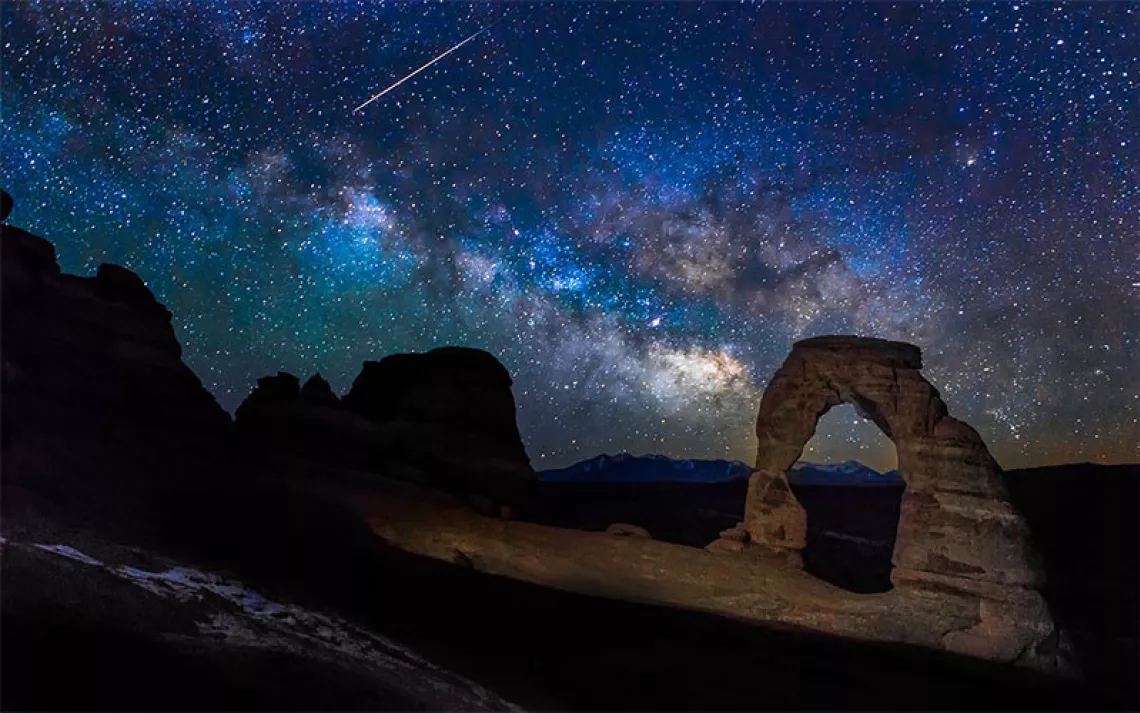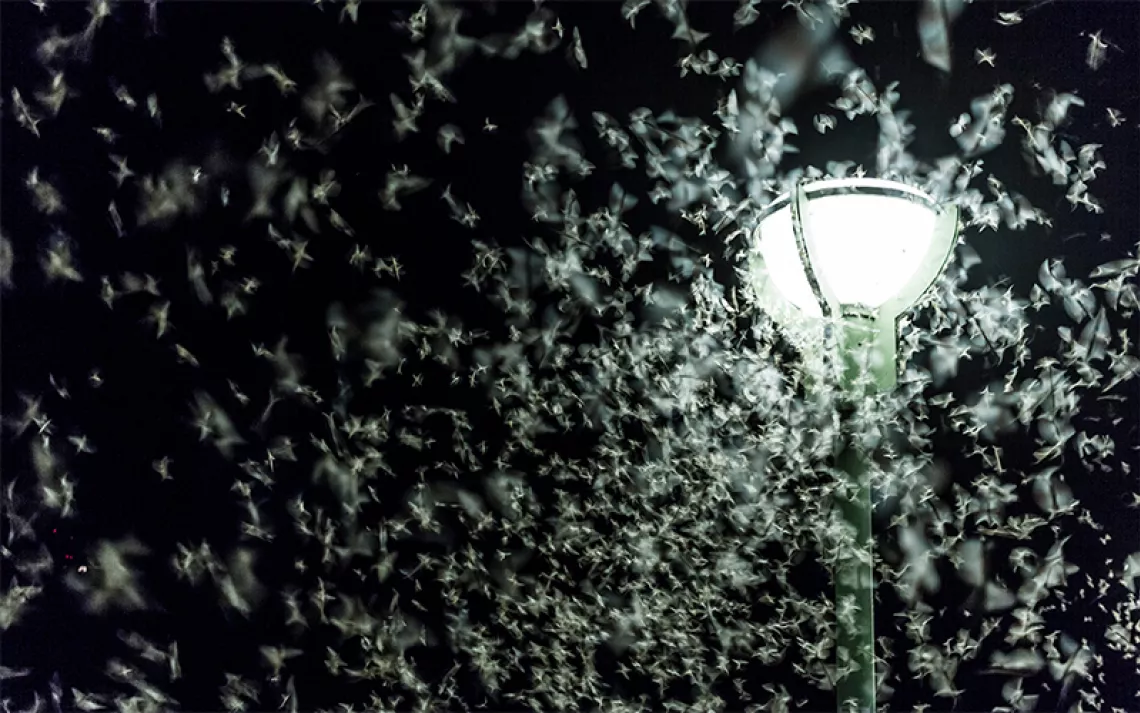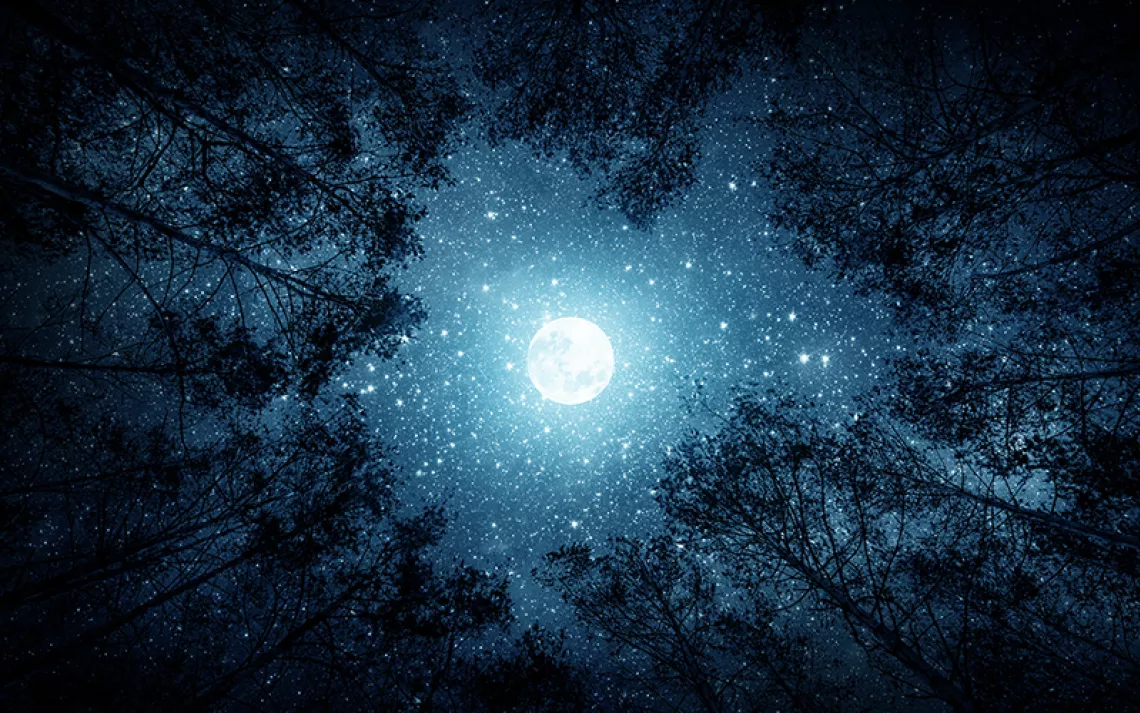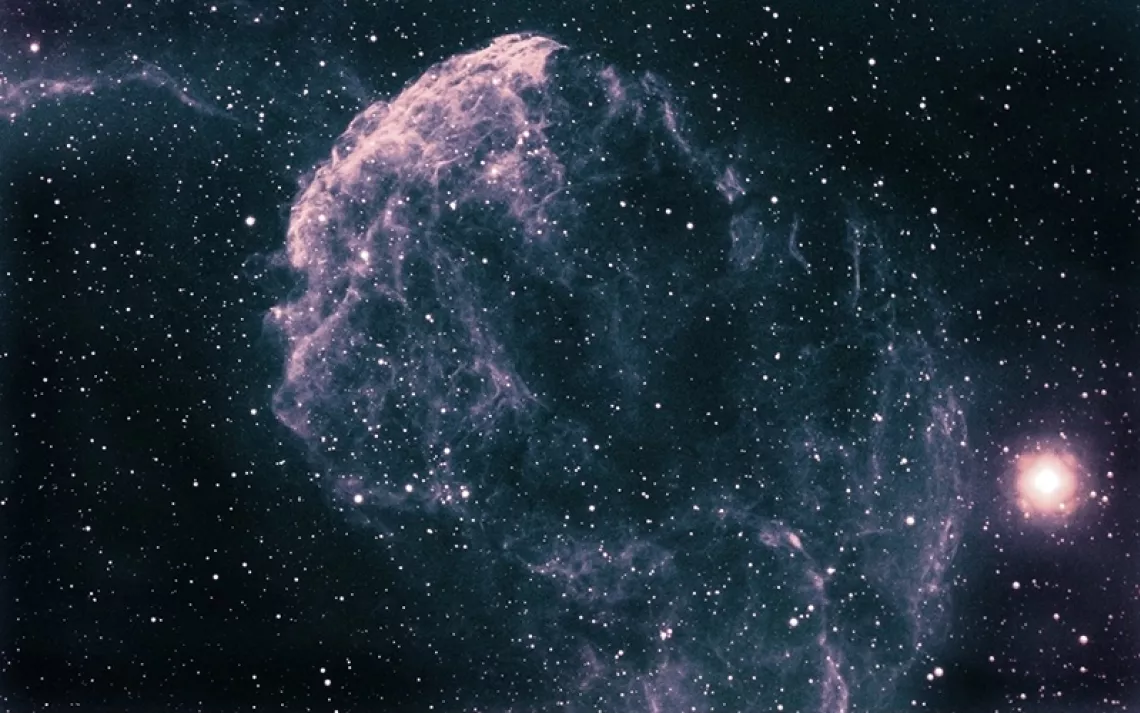Darkness Visible
A new dark-sky sanctuary in rural Oregon will help protect the sight of stars
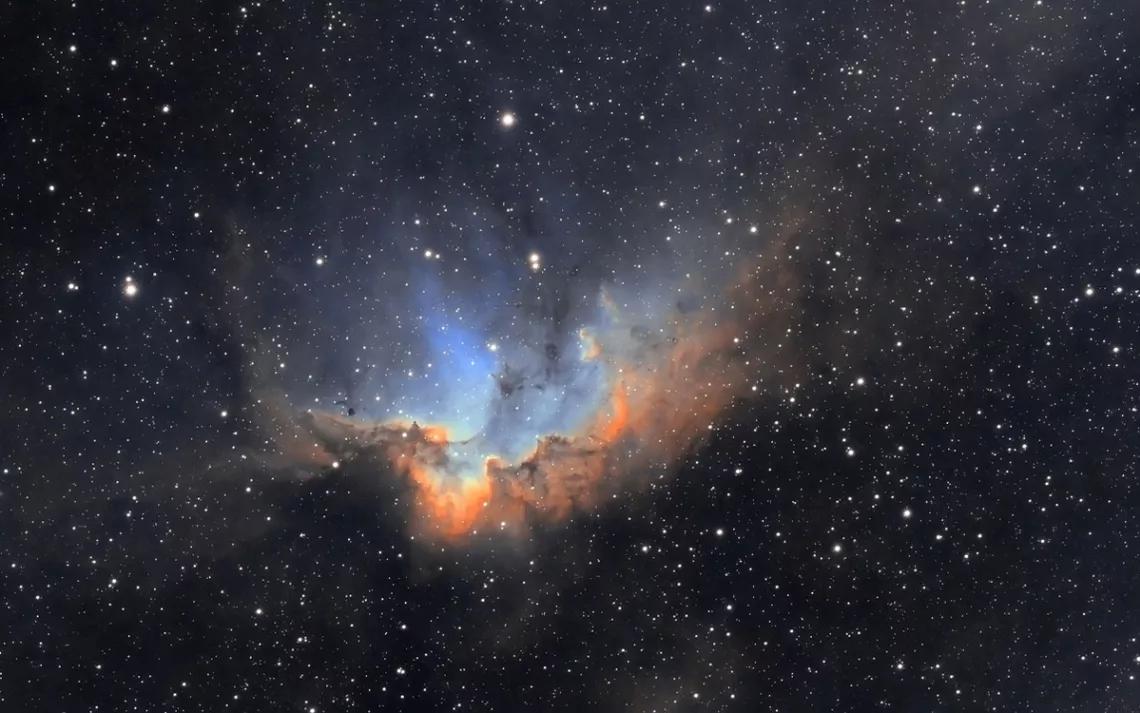
The Outback, in eastern Oregon—the world’s newest and largest dark-sky sanctuary—will give visitors a chance to commune with the stars and deep-sky objects like NGC 7380, the Wizard Nebula, in the constellation Cepheus. | Photo by Jeremy Miller
For four years, Dawn Nilson, a Portland, Oregon–based environmental consultant and amateur astronomer, was on a mission for darkness. Starting in 2018, she drove thousands of miles on washboard roads in the empty, sagebrush-stippled reaches of southeastern Oregon. In the black of night, she and a team of volunteers counted every single street and porch light in a 4,000-square-mile area. Back in her office, she pored over maps and satellite images. Her efforts were all in service of a single goal: preserving one of the largest remaining parcels of dark skies in the Lower 48.
Once her research and fieldwork were complete, she drafted a 220-page application, and last January she submitted the final version to DarkSky International, an advocacy group that works to protect the night sky in countries around the world. Her motivation was simple: “I wanted it to have the distinction of it being the biggest sanctuary in the world.”
Earlier this year, her hard work paid off. In March, DarkSky International announced the creation of the Oregon Outback International Dark Sky Sanctuary, also known as ODISS (pronounced “Otis”). To call ODISS big is an understatement. The sanctuary covers 2.5 million acres—an area roughly the size of the Big Island of Hawai'i. The next phase, which Nilson hopes will be formalized in the next few years, will encompass a much larger swath of land, some 11.4 million acres. “That’s the size of two New Jerseys,” says Nilson. “Or one Denmark.”
In terms of sheer scale, ODISS is indeed a major leap, two and a half times the size of the previous largest sanctuary, Boundary Waters Wilderness along the Minnesota-Canadian border. Like its Australian namesake, Oregon’s Outback is vast and sparsely populated, with a population density of just over one person per square mile. “By comparison, Mongolia has five times more population density than Lake County,” said Bob Hackett, executive director of Travel Southern Oregon, who worked with Nilson on the application process. “If the island of Manhattan had the same density as the [Oregon] Outback, there'd be 20 people on it.”

Sign up to receive Sierra News & Views
Get articles like this one sent directly to your inbox weekly.
With this action you affirm you want to receive Sierra Club communications and may vote on policy designated by the Sierra Club Board.
The area’s massive size and lack of human population are what make its skies among the darkest, most star-filled reaches of the United States. For example, in dark suburban skies on the outskirts of major cities, as many as 2,000 stars are visible on a clear night. In the inky-black darkness of the Outback, that number is over 4,500. On a moonless summer night, the so-called galactic center—the dense cluster of stars that make up the core of the Milky Way Galaxy in the constellations of Scorpius and Sagittarius—is bright enough to cast shadows.
The Outback is not only exceedingly dark but also rugged, full of lonely mountains, geothermal springs, sprawling basins, and dry lakebeds. Dozens of wildlife species inhabit the area, including bighorn sheep, American pronghorn, and the endangered sage grouse. It also harbors some of the oldest known archaeological sites in North America, some more than 13,000 years old.
The designation comes at a crucial time, when the night sky is brightening by an average of 10 percent per year and urban sprawl consumes vast tracts of land. Recent research has shown that light pollution throws animals off migration routes and alters breeding habits and other behaviors. Other studies have revealed that stray light is a human health threat, throwing off sleep cycles and disrupting human circadian rhythms, which, in turn, can increase the incidence of disease, including certain kinds of cancer. “Light pollution is one of the easiest forms of pollution to do something about,” Nilson said.
The movement to designate dark-sky reserves dates to the late 1980s, with the establishment of the group The International Dark Sky Association (renamed to DarkSky International in 2022). In 2007, the IDA designated the world’s first dark-sky reserve in Quebec’s Mont-Mégantic National Park. Since that designation 17 years ago, surrounding municipalities have replaced 2,500 light fixtures, reducing light pollution along Mont-Mégantic’s periphery by 25 percent. But the group’s core mission, "to preserve and protect the nighttime environment,” is impossible without the preservation of large and contiguous tracts of land.
In recent years, the rise of photo-sharing apps and social media sites have driven interest in amateur astronomy and astrophotography. That burgeoning interest in the night sky, in turn, has driven a growing astro-tourism industry. While numbers are hard to come by, one report estimates that astro-tourism in the dark-sky regions of the Colorado Plateau could inject $5.8 billion into local economies and create more than 10,000 jobs annually. Beckett hopes that astro-tourists, telescopes—cameras and tripods in tow—will view the Outback as a must-see attraction. “This clearly was just a giant unleveraged, natural asset,” he said. “The question was how to get people to work together to create something destination-worthy that didn't previously exist.”
But tourism can be a double-edged sword. Advertising the area and courting increasing numbers of tourists could work against the preservation of the region’s dark skies and sensitive ecological and cultural resources. Beckett says it’s unlikely that the remote region will fill up with hotels, gas stations, restaurants, and other trappings of car-centric tourism infrastructure any time soon. Nevertheless, he said, the new designation will also require careful management. “You don't want people to invest in these big things and have nobody show up. But then you don't want to have so many people showing up that it's a bad experience for everybody.”
He added, “One group we kept hearing from is search and rescue. They were like, ‘Please communicate with people really well so that that we're not rescuing people trying to do things they shouldn't be doing.’” But Beckett believes the average visitor to the rugged area will also be well equipped, self-sufficient, and familiar with the fundamentals of backcountry travel. “Most people who are going to come out and camp will be super prepared.”
The challenge of creating a dark-sky sanctuary in rural Oregon was not finding dark places. “That was the easy part,” Nilson said. The main difficulty was stitching it together from a hodgepodge of federal, state, and local land management agencies including the Bureau of Land Management, the US Forest and Fish and Wildlife Services, and the Oregon Department of Parks and Recreation. Nilson said her work as a natural resources management consultant allowed her to coordinate the effort between disparate stakeholders. “You have to know how to pull everybody together and be responsive to stakeholders,” Nilson said. “You have to know how to engage people and hear their concerns. That was my venue.”
Nilson said the new sanctuary will implement a lighting management plan, which works with landholders to replace fixtures that emit light into the air with ones that redirect illumination toward the ground. Though ODISS covers an area comparable to that of a large national park or wilderness area, it does not have the same sort of regulatory framework. Rather, it entails a voluntary commitment from signatories to comply with the lighting management plan. “It's a pledge that they'll bring their compliance to 90 percent within five years of certification, and to 100 percent in 10 years,” said Beckett.
The trickiest part of the application process, she said, was communicating the vision of the sanctuary to residents of isolated rural communities, many of whom are suspicious of any form of governmental regulation. “We had to do a lot to convince people that this is not a regulation and that nobody's coming after them to tell them to turn off their lights,” Nilson said.
She noted that dark-sky sanctuaries like ODISS are a formal acknowledgment of what rural communities are already doing well. “Darkness,” she said, “is part of the identity of rural communities. We really tried to hammer home the point that if you do this, you will help to maintain your rural character. The flip side is if you don't do this, we're going to go backward and you're going to lose rural character.”
The landscapes of the Outback are not only rural but wild—and their preservation goes hand in hand with the protection of countless species, including human beings. “Dark skies equal habitat,” Nilson said. “There is no living thing on this earth that evolved without a day and a night.”
 The Magazine of The Sierra Club
The Magazine of The Sierra Club
